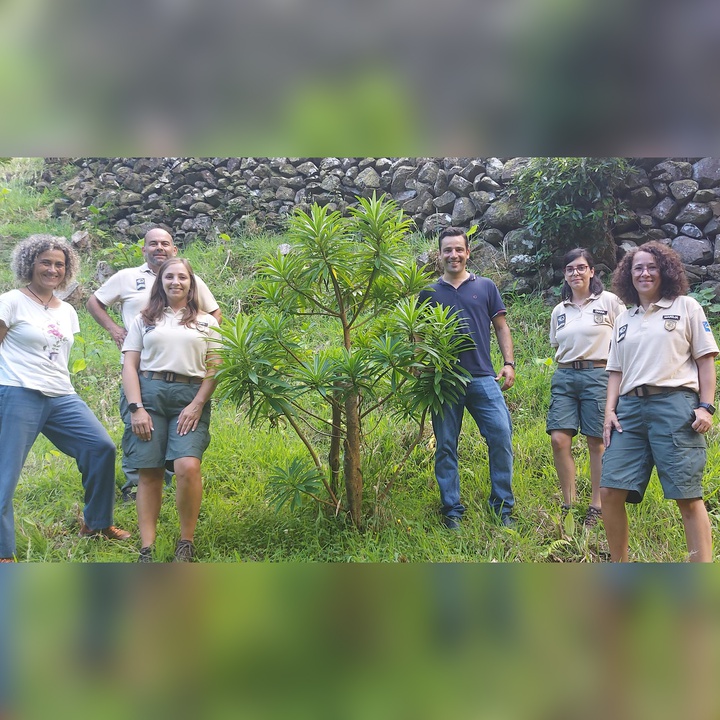Text size:
News

Regional Secretary for the Environment and Climate Change identifies a new population of 𝙀𝙪𝙥𝙝𝙤𝙧𝙗𝙞𝙖 𝙨𝙩𝙮𝙜𝙞𝙖𝙣𝙖 ssp. 𝙨𝙖𝙣𝙩𝙖𝙢𝙖𝙧𝙞𝙖𝙚 on the island of Santa Maria
Aug. 3, 2023
The Regional Secretary for the Environment and Climate Change, Alonso Miguel, announced, within the framework of the Park Ranger Regional Meeting, which took place on the island of Santa Maria, between 31 June and 2 August, the discovery of a new population of the rare endemic subspecies called Euphorbia stygiana ssp. santamariae, better known as Azorean Spurge.
Following the visit to the place of residence of this endemic Azorean plant, Alonso Miguel explained that “the suspicion of the existence of a small colony of Euphorbia stygiana ssp. santamariae in Cura Bay arose as a result of a boat visit around the island, as part of the census of terns carried out by the Santa Maria Environment and Climate Change Service, in which Park Ranger Diana Braga observed specimens that appeared to belong to the species”.
“Taking into account that the area is only accessible by sea, a team from the Environment and Climate Change Service travelled to the site, on the east coast of the island, in the last week of July, and it was possible to confirm that they were specimens of that subspecies," said the Regional Secretary, adding that “in a first observation, it is estimated that this population consists of about 20 individuals, located in the middle of the Protected Area for the Management of Habitats and Species of Baía do Cura, integrated in the Santa Maria Natura Park”.
The person responsible for the Environment considers that “given the orography of the site and the difficulty in access, the characterisation and conservation work of this new population is particularly complex, but even so, there will certainly be the capacity to collect seeds from some individuals for their propagation in nurseries, to enable subsequent reinforcement plantations, within the scope of action C3.2 (In-situ conservation) of the LIFE IP AZORES NATURA project”.
“In addition to Euphorbia stygiana ssp. santamariae, specimens of several other endemic and native species were also observed, such as Ammi seubertianum, Azorina vidalii, Spergularia azorica, Festuca petraea, Hypericum foliosum, Euphorbia azorica, Tolpis succulenta, Plantago coronopus and Limonium vulgare. The presence of Aichryson santamariensis is also suspected, the confirmation of which will be carried out in a forthcoming visit to this site, which thus reveals itself as an important stronghold of habitat 1250 – cliffs with endemic flora of the Macaronesian coasts, according to the Habitats Directive”, he revealed.
Until this discovery, only a single population of Euphorbia stygiana ssp. santamariae was known in the wild, consisting of 71 specimens.
Alonso Miguel also emphasised that “Euphorbia stygiana ssp. santamariae has already been the target of several conservation efforts within the scope of the LIFE IP AZORES NATURA project, and the recent discovery, which significantly reinforces the number of known individuals, brings renewed hope to this important goal of ensuring the maintenance of this rare and protected species, valuing and dignifying our biodiversity and natural heritage of the Region, in general, and of Santa Maria, in particular”.

